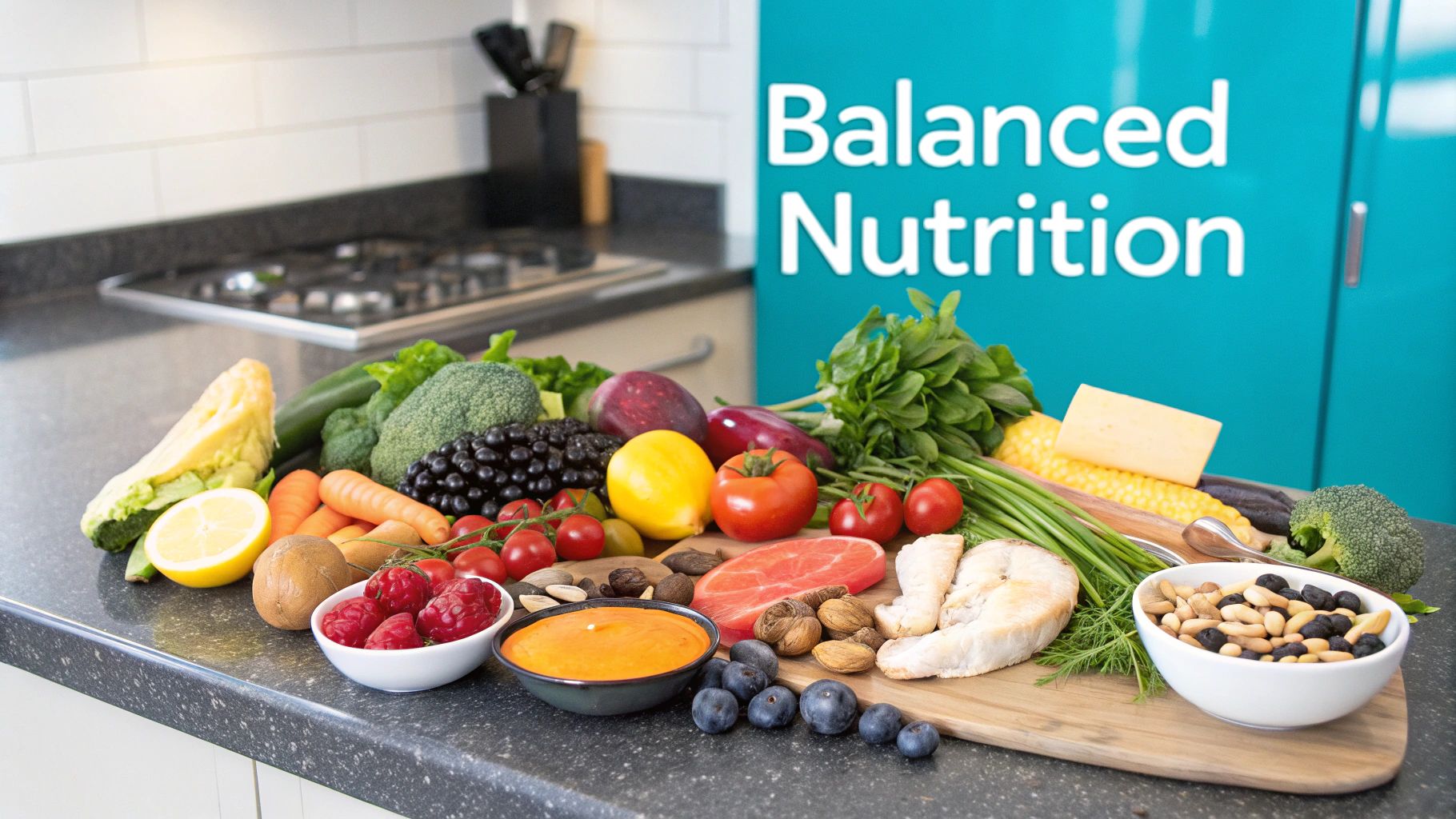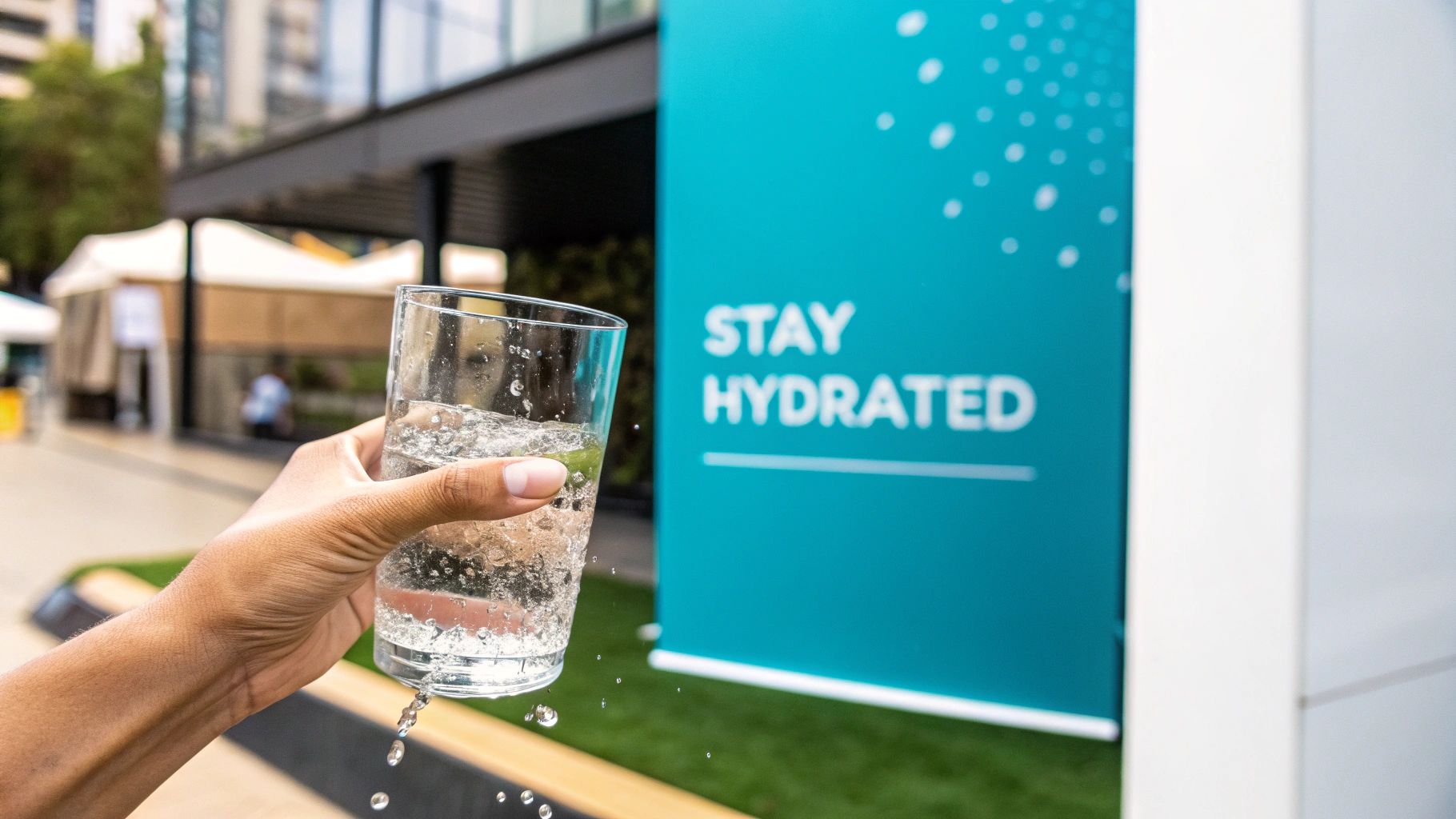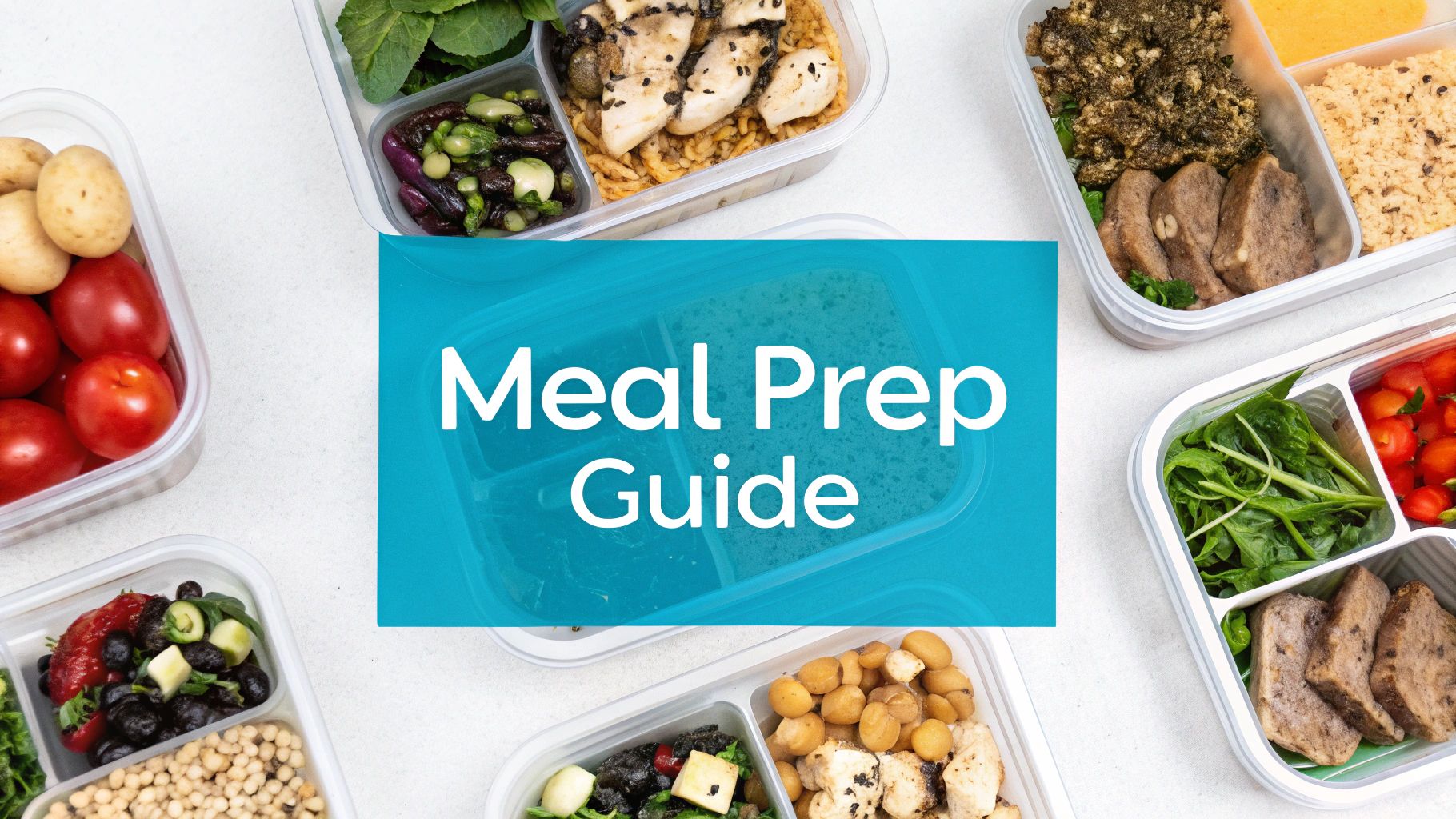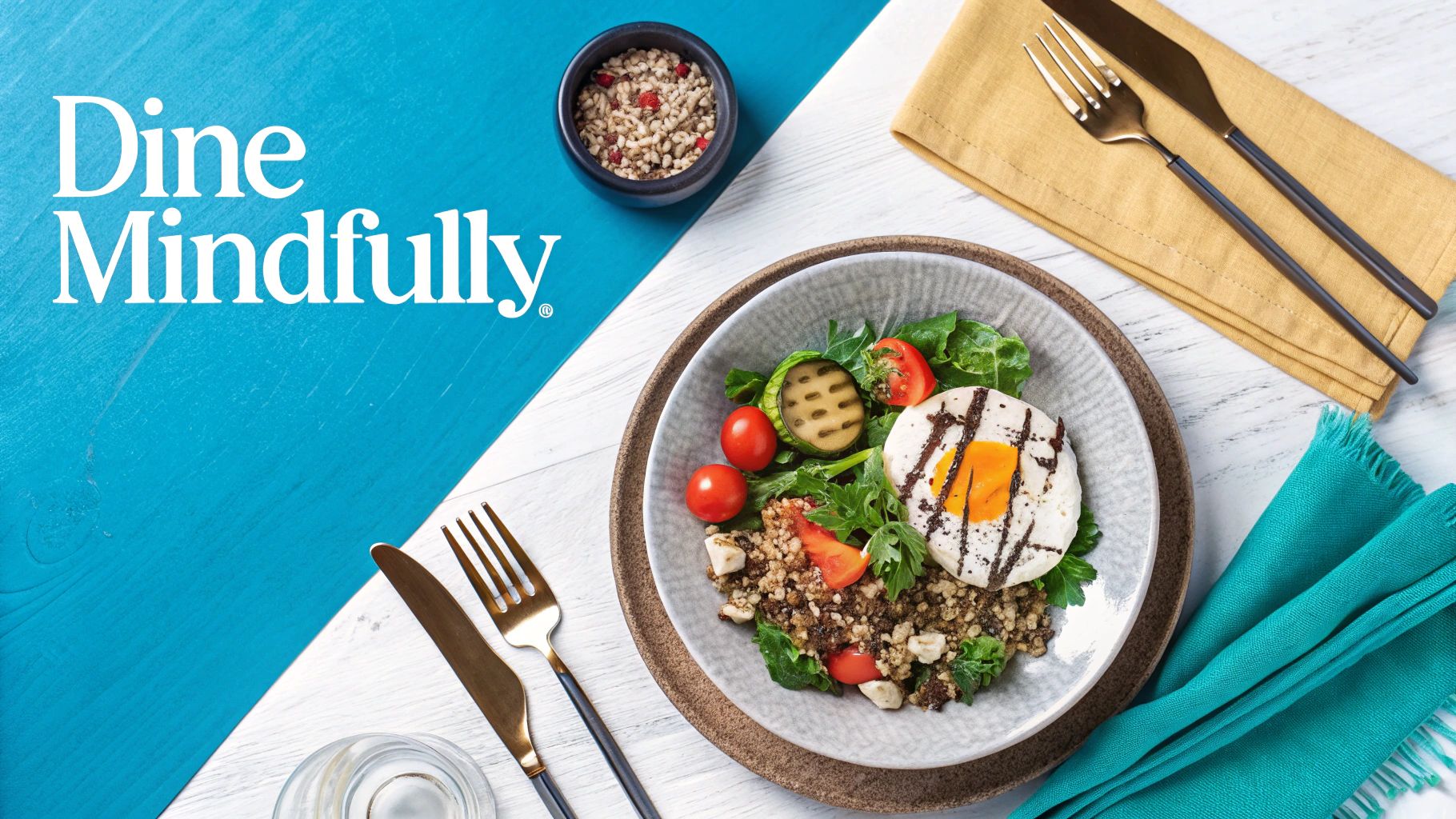Body Recomposition Meal Plan: Your Ultimate Guide to Success
After doing 2 fat loss “sprints” and and full body workout for 3 months.
Understanding Body Recomposition: Science Behind Success
Want to transform your physique without the typical bulk-and-cut rollercoaster? Body recomposition might be exactly what you're looking for (Click here to lose 30lbs in 2.5 months)! Unlike traditional approaches that separate muscle gain and fat loss into distinct phases, body recomposition lets you achieve both goals simultaneously. But how does this fascinating process actually work? We'll dive in the details but first, if you want to get shredded & sexy without tracking all macros or giving up desserts, get my completely free fat loss guide that has helped me lose 30 lbs in 9 weeks.
The Science of Simultaneous Fat Loss and Muscle Gain
The magic of body recomposition happens through careful management of three key factors: hormones, nutrient timing, and metabolic adaptation. Your body's natural hormone production - especially testosterone and growth hormone - drives muscle growth. By optimizing these through smart training and eating habits, you can build muscle even while losing fat. The trick is getting your workout and meal timing just right.
Think of nutrient timing like delivering supplies exactly when your muscles need them most. For example, having protein and carbs after training helps refuel your muscles and kickstart recovery. Regular exercise combined with balanced nutrition teaches your body to burn fat more effectively for energy. Getting this balance right is what makes body recomposition work so well.
The Role of Protein in Body Recomposition
Protein is your best friend when it comes to reshaping your body. Not only does it provide essential building blocks for muscle, but it also has a special bonus: a high thermic effect. This means your body burns extra calories just digesting protein compared to other nutrients. Research shows impressive results - in one study, young overweight men eating 2.4 grams of protein per kilogram of body weight while training intensely lost an average of 10.5 pounds of fat and gained 2.5 pounds of muscle in just four weeks. Want more healthy eating tips? Check out our free mini-course
Shifting From Bulking and Cutting to Recomposition
The traditional bulk-and-cut approach often leads to a frustrating cycle - gaining unwanted fat during bulking, then losing hard-earned muscle while cutting. Body recomposition offers a smarter path forward. Instead of dramatic swings, you make steady progress by building muscle and burning fat at the same time. It's perfect for anyone wanting sustainable results and a consistent, healthy approach to fitness.
Beyond Calories: The Importance of Body Composition
Remember: body recomposition isn't just about what the scale says - it's about improving your ratio of lean mass to body fat. This shift brings amazing benefits, from better metabolic health to increased strength and athletic ability. By understanding the science and following a smart nutrition plan, you can unlock your body's true potential and build the physique you've always wanted.
Mastering Your Personal Macro Blueprint

Getting amazing results with your body goes way beyond just watching calories! The real magic happens when you master your macronutrients - protein, carbs, and fats. By understanding how to adjust these nutrients specifically for your goals, you can create your perfect nutrition plan. Let me show you exactly how to do it!
Calculating Your Macro Ratios
First up, you'll need to figure out your basal metabolic rate (BMR) - that's how many calories your body burns just existing! You can easily find this using online calculators that look at things like your age, gender, weight and height. Once you know your BMR, factor in how active you are to get your total daily energy needs.
Your perfect macro split really depends on what you want to achieve. Building muscle? You'll want to load up on protein and carbs. Looking to shed fat? You might dial back the carbs a bit and bump up those healthy fats. The key is getting enough protein - research shows you need about 0.8 to 2 grams per kilogram of body weight daily to maintain muscle while changing your body composition. Want to learn more? Check out Kova Method
Macronutrient Ratios by Goal
Here's a super helpful breakdown of how to split up your macros based on different goals. Remember, these are starting points - you can tweak them based on how your body responds!
| Goal Type | Protein % | Carbs % | Fats % |
|---|---|---|---|
| Primarily Fat Loss | 40 | 30 | 30 |
| Balanced | 35 | 40 | 25 |
| Primarily Muscle Gain | 30 | 50 | 20 |
Adjusting Your Macros as Your Body Changes
Your body is amazing at adapting, which means your nutrition needs will shift as you progress! Keep an eye on your results and fine-tune your macros when needed. Hit a fat loss plateau? Try slightly reducing carbs or moving more. Not gaining muscle as fast as you'd like? You might need more protein or to switch up your workouts.
Practical Tools for Tracking and Adjusting Your Nutrition
Keeping tabs on what you eat is absolutely key for staying on track with your plan. There are tons of awesome apps out there that make tracking your food super simple. These tools help you spot patterns and areas where you could make your nutrition even better. By staying consistent with tracking and making smart adjustments, you'll keep moving toward your goals like a pro!
Strategic Meal Timing for Maximum Results

Meal timing is one of the most powerful tools you can use to build muscle and lose fat. Getting your nutrition right isn't just about what's on your plate - it's about when you eat it too! Let's explore how strategic meal timing can help you get the most out of every bite.
Nutrient Timing and Muscle Protein Synthesis
Want to make sure those nutrients go toward building muscle instead of being stored as fat? That's where nutrient partitioning comes in. By timing your meals around workouts, you can optimize muscle protein synthesis - your body's process of building new muscle tissue. The key is getting the right mix of protein and carbs before and after training to give your muscles exactly what they need.
Pre and Post-Workout Nutrition
Think of your pre-workout meal as premium fuel for your training session. Eat a balanced mix of protein and carbs 1-2 hours before hitting the gym to power through your workout. After training, you've got a golden window of opportunity - your muscles are like sponges ready to soak up nutrients. Get in some quick-digesting protein and carbs within 30-60 minutes to kickstart recovery.
Meal Timing Strategies for Different Training Schedules
Whether you're crushing it at dawn or getting after it after work, you need a meal plan that fits your schedule. Morning warriors might want to start with something light like a banana and peanut butter, then follow up with a hearty breakfast of eggs and toast post-workout. Evening trainers should focus on a solid lunch and dinner combo, making that post-workout meal count.
Meal Planning and Macronutrient Tracking
Success happens when you plan ahead! Getting your meals lined up means you'll hit your protein, carb and fat targets consistently. Mix it up with tasty options like post-workout protein shakes with berries, or lunch bowls packed with grilled chicken and quinoa. Want more meal planning inspiration? Check out these awesome body recomposition meal plans.
Using Intermittent Fasting
Intermittent fasting (IF) isn't just a buzzword - it's a game-changer for body recomposition when done right. By choosing smart eating windows, you can torch fat while holding onto hard-earned muscle. The key is matching your fasting schedule with your training and listening to your body's signals.
The Importance of Consistency and Individualization
Here's the real talk - the best meal timing strategy is the one you can stick to consistently. What works amazingly for your gym buddy might not be ideal for you. Play around with different approaches and pay attention to how your body responds. When you find that sweet spot of sustainable habits that get results, you're golden!
The Art of Strategic Calorie Cycling
Want to change your body composition the smart way? Forget rigid diets - the real key is learning how to match your calories to your body's needs. Calorie cycling is your secret weapon for getting amazing, sustainable results.
Calorie Cycling: Fueling Your Transformation
Just like a sports car needs different amounts of fuel based on how hard it's being driven, your body's energy needs change day by day. On heavy training days, you need extra calories to build muscle and recover properly. During rest days, you can dial things back. The beauty of calorie cycling is that it prevents your metabolism from getting too comfortable - keeping your body burning fat while preserving muscle.
Your perfect calorie cycling plan depends on factors like your basal metabolic rate (BMR), activity level, and goals. But the core idea is simple: give your body the right amount of fuel at the right time. For example, eat more on training days to support muscle growth, and slightly less on rest days to promote fat loss. Want to learn more about dialing in your nutrition? Check out our free guide 100's of women are using to look super toned.
Sample Calorie Adjustments
Here's a practical example of how to adjust your daily calories based on your activity level. Remember, these are general guidelines - you'll want to customize based on your needs:
| Activity Level | Calorie Adjustment | Example (2000 cal baseline) |
|---|---|---|
| High-Intensity Training Day | +200-300 calories | 2200-2300 calories |
| Moderate-Intensity Training Day | +100-200 calories | 2100-2200 calories |
| Rest Day | -100-200 calories | 1800-1900 calories |
| Active Rest Day (light activity) | +/- 0 calories | 2000 calories |
Listening to Your Body
Numbers are great starting points, but your body will tell you what it needs. Feeling exhausted all the time? You might need to bump up those calories a bit. Not seeing fat loss despite eating in a deficit? It could be time to tweak your macros or switch up your workouts. Pay attention to these signals - they're your roadmap to success.
Troubleshooting Plateaus
Hit a progress plateau? Don't sweat it - it happens to everyone! Here's what to try:
- Re-evaluate your calorie and macro targets: Your needs change as your body changes
- Adjust your training intensity or volume: Sometimes a small workout tweak makes all the difference
- Prioritize sleep and stress management: These factors hugely impact your results
- Consider a deload week: Taking it easier for a week can help break through plateaus
Master calorie cycling and you'll always give your body exactly what it needs to thrive. Combined with consistent training and good recovery habits, this approach helps you build your best body - and keep it for life.
Customizable Meal Plans That Actually Work

Ready to put your body recomposition knowledge into action? Let's dive into creating a personalized meal plan that works for you. We're not talking about boring, restrictive diets - this is about enjoying delicious food that helps you reach your goals.
Example Meal Plans for Different Dietary Preferences
Your food preferences matter! Whether you love meat, follow a plant-based diet, or fall somewhere in between, there's a perfect meal plan waiting for you. Here are some tasty examples to get you started:
- Omnivore Example:
- Breakfast: Scrambled eggs with spinach and whole-wheat toast
- Lunch: Grilled chicken salad with mixed greens and a light vinaigrette
- Dinner: Salmon with roasted vegetables (broccoli, carrots, sweet potatoes)
- Plant-Based Example:
- Breakfast: Tofu scramble with black beans and avocado toast
- Lunch: Quinoa salad with chickpeas, cucumber, and a lemon-tahini dressing
- Dinner: Lentil stew with brown rice and a side of steamed greens
Remember, these are just starting points. Mix and match ingredients, try new recipes, and make these plans your own.
Chef-Crafted Meals for Real People
We've teamed up with skilled chefs to create delicious recipes that fit your macros and taste amazing. No bland "diet food" here! Picture a zesty shrimp stir-fry loaded with colorful veggies, or a warming lentil soup that keeps you satisfied for hours.
Making it Fit Your Budget and Schedule
Let's be real - time and money matter when it comes to healthy eating. Our meal plans use everyday ingredients and smart prep strategies to keep things affordable and efficient. You'll get proven tips for batch cooking and meal prep that save precious time while helping you stay on track.
Shopping Lists, Prep Guides, and Time-Saving Shortcuts
We make healthy eating simple with detailed shopping lists and step-by-step guides. You'll get clear instructions for everything from grocery shopping to cooking and cleanup. Plus, we show you how to adjust recipes to match your tastes while hitting your macro targets.
Tips for Adapting Meal Plans to Your Needs
- Food Swaps: Not into broccoli? Use asparagus instead! Flexibility makes healthy eating work.
- Portion Control: Scale servings up or down based on your needs.
- Seasoning and Spices: Have fun trying different flavors to keep meals exciting.
- Leftovers: Cook extra and pack it for tomorrow's lunch.
With these practical tips, meal planning becomes an enjoyable part of reaching your body recomposition goals.
Measuring Success and Making Smart Adjustments

Starting a body recomposition meal plan is exciting! But how do you know if your hard work is paying off? The key is tracking your progress the smart way - and that means looking beyond just the numbers on your scale.
Going Beyond the Scale: Key Metrics for Body Recomposition
While weighing yourself can be useful, it doesn't show the whole picture. Your goal is to lose fat and gain muscle at the same time. Think about it - if you replace a pound of fat with a pound of muscle, the scale won't budge, but you'll look and feel totally different! That's why tracking multiple metrics is so important.
Here are the key measurements to focus on:
- Body Fat Percentage: This tells you way more than weight alone. You can track it using calipers, DEXA scans, or smart scales.
- Body Measurements: Grab that measuring tape! Track your waist, hips, chest, and thighs. A smaller waist plus bigger thighs? That's a win for body recomposition!
- Progress Photos: Snap weekly or monthly photos in consistent lighting and poses. Nothing beats seeing actual changes in your body!
- Strength Numbers: Keep a log of your gym performance. Getting stronger means you're building muscle - awesome!
- Clothing Fit: Pay attention to how your clothes feel. Looser jeans? Shirts fitting better in the shoulders? These real-world changes are super motivating!
Interpreting Your Data: Spotting Patterns and Making Adjustments
Getting all this data is just step one. The magic happens when you learn to read it and make smart changes to your plan. Track everything consistently and look for trends - steady progress means you're on the right path!
Hit a plateau? Don't stress! It's totally normal. Take it as a signal to review and tweak your approach.
Troubleshooting Common Challenges
Even with perfect planning, you might face some bumps along the way. Here's how to handle common issues:
- Fat Loss Stalling: Try dropping calories slightly, adding more cardio, or adjusting your protein/carb/fat split.
- Muscle Growth Too Slow: Check your protein intake and gym intensity. Maybe it's time to add more sets or bump up those weights!
- Energy Crashes: Look at your sleep quality and stress levels. Sometimes eating a bit more can actually help - wild, right?
Making Data-Driven Decisions
The best part about tracking multiple metrics? You can fine-tune your plan based on what your body is telling you. Think of body recomposition as your personal science experiment. Stay consistent with tracking, be patient, and don't be scared to adjust things when needed. Your data is your roadmap to amazing results!
Ready to transform your body and feel incredible? The Kova Method helps busy women achieve sustainable weight loss and muscle toning without restrictive diets. Our science-backed strategies and food and supplement hacks help you get sexy and toned faster. Learn more at Kova Method.

